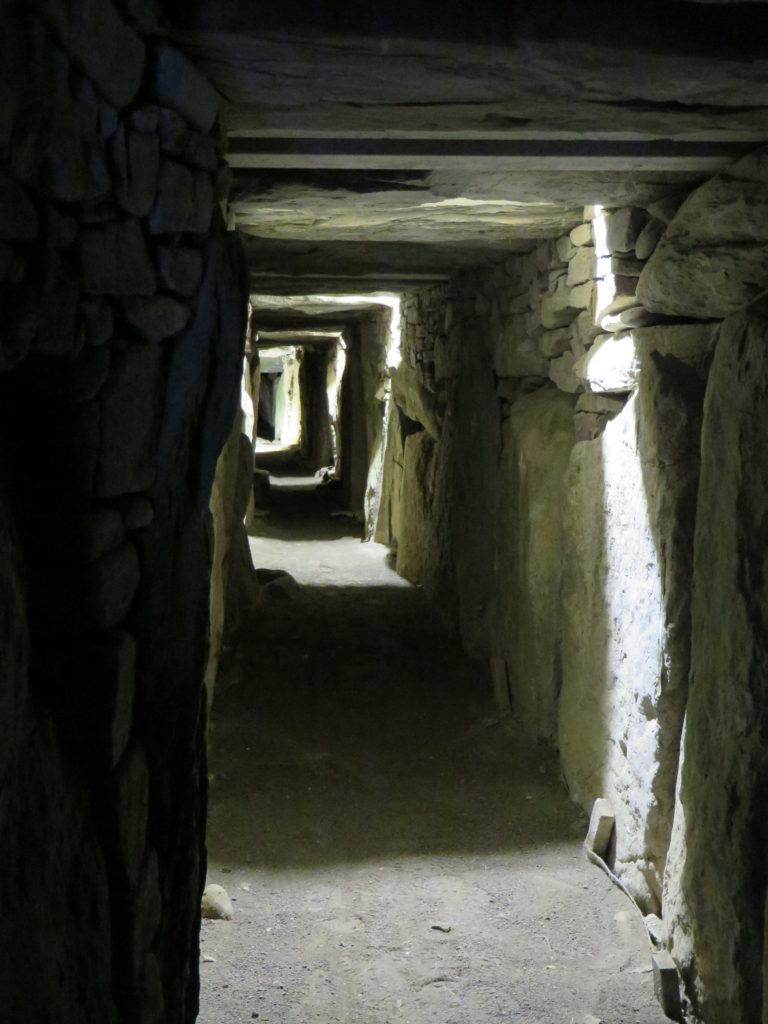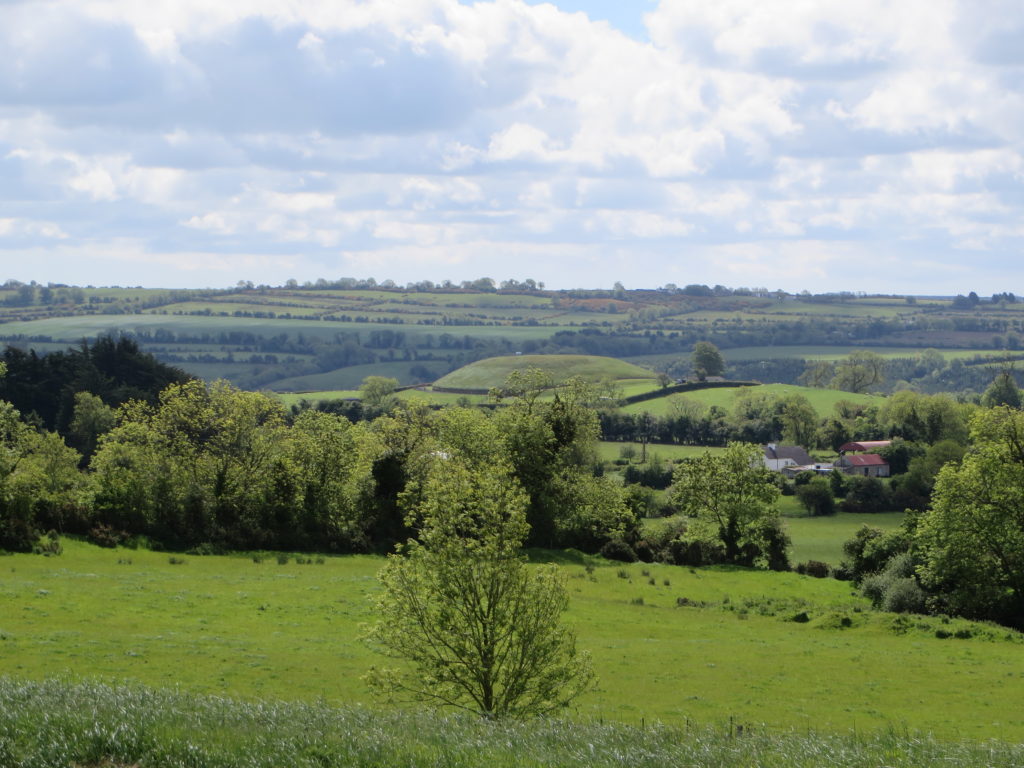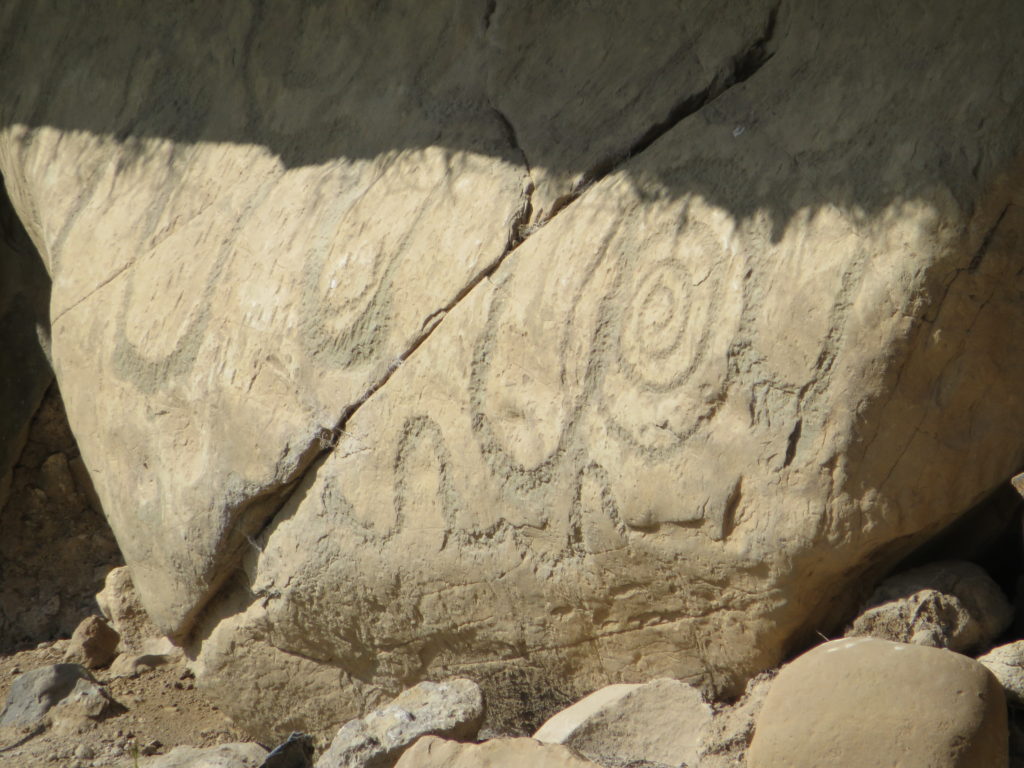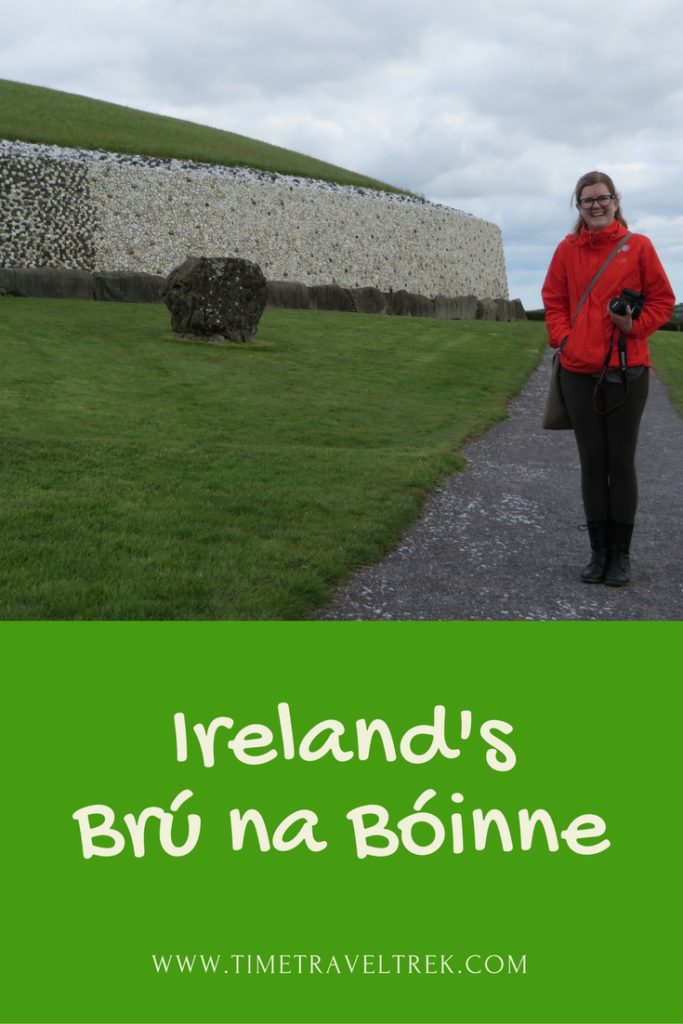Brú na Bóinne is an Irish treasure. The name means the palace or the mansion of the Boyne, but in reality today it is a prehistoric site that you won’t want to miss!
Disclosure: This post contains Affiliate Links.
Table of Contents
What’s in a Name?
Brú na Bóinne is the Gaelic name given to an area in Ireland dominated by three immense prehistoric passage tombs – Newgrange, Knowth and Dowth.

Behind the Stones
The site is a designated UNESCO World Heritage Site in southern Ireland. This cemetery complex flourished during the New Stone Age – or Neolithic period – leaving a priceless legacy.

Take a look, by the numbers:
4000 BC the first of the tombs were built
30 different mounds visible in the area
2,000 stones, each weighing several tons, used in the tombs
3-5 distance in kilometres where large stones were quarried
4 days for 80 men to bring a large stone from the quarry
115 number of kerbstones surrounding Dowth
1699 year Newgrange explored by researcher Edward Lhwyd
34 metres, the length of Knowth’s Western tomb passage
7th century AD, Knowth is home to Kings of Northern Brega
600 number of decorated stones in the site
60 % of Western European Neolithic art in Brú na Bóinne
21st December date light pierces Newgrange’s chamber

Did You Know?
Most of Ireland’s OPW (Office of Public Works) Heritage Sites are open to the public free of charge on the first Wednesday of each month in 2017. More information can be found at www.heritageireland.ie.
Read more about our Irish adventures at:
The Stone Circles of Cork & Kerry, Ireland
Getting to Know Guinness: Going to the Source in Dublin, Ireland






Leave a Reply